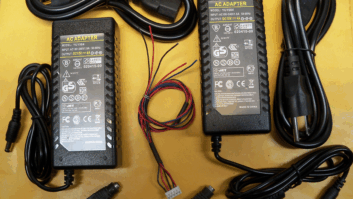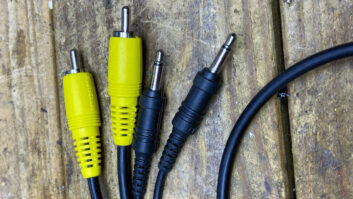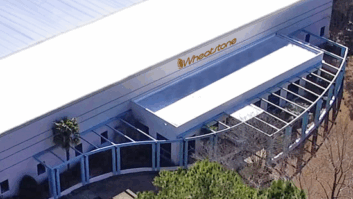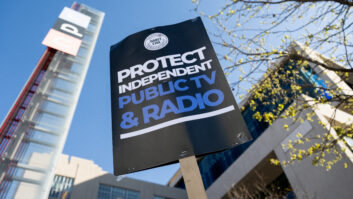
This generator can easily power a 1-2 kW transmitter and is inexpensive, but lacks auto-start and a changeover switch. Five years ago I wrote in Radio World about Hurricane Ike, a storm that had aimed directly at my station’s transmitter site until it unexpectedly turned north at the last minute. Severe weather often means power failures — sometimes extremely long failures. In the aftermath of such storms, owners, general managers and chief engineers, even those at stations well away from the impact zone, begin weighing the advantages against the disadvantages of purchasing a standby power source.
Wait a minute. Disadvantages? Are there disadvantages to having a secondary power source available when the grid goes dark?
In many cases there are; but as with many engineering questions, some digging is required to flesh those out. Only by going through that process can you arrive at an educated decision for your station.
PROS
First, the “advantage” side of the equation.
Obviously, the station stays on the air when the primary power fails — a huge advantage and, in fact, pretty much the only one.
But a bit more needs to be said about “staying on the air.” Is that staying on with everything? All studios, main or aux transmitter, production facilities, office space, literally everything? In the top 10 markets, the answer might be “yes,” but even then maybe only at the top-tier stations. The smaller guys might think having enough power to run the necessities — a lower power aux transmitter, a sat receiver and a small cut-in studio — would do just fine.
Also, in the “staying on the air” definition column, you should put the question: “For how long?” Hours, days, weeks? And does the cutover from grid to generator have to be seamless? Or can you tolerate anywhere from a minute of dead air (if the failure is during the day), or up to an hour or more (if it fails when no one is around and things need to be manually reset after the generator ramps up and stabilizes)?
The answers to these questions, even for a small station, can mean tens of thousands of dollars difference in cost.
So, with those qualifiers added to the “Advantages” column, we can turn to the “Disadvantages” side of the ledger.
CONS
Of course there is the capital investment to worry about. To run a small Class A FM, or 1 kW AM in bare-bones mode, it might only run $7,000 or $8,000, maybe even less. But to keep a 50 kW AM on the air, or a full Class C FM, the price is easily 10 times that much (and way more than that if UPS, auto-switch and power-line sync equipment are included).

A large generator professionally installed with all the goodies can cost well over $50,000. If your goal is to keep both the transmitter and studio sites up, you can double the cost. Many stations ignore studio power failure possibilities because urban power grids typically are much more reliable than those out on the top of a mountain, but as was proved in New York City last year, city grids and substations can catastrophically fail.
Next, standby power equipment belongs to the station, not the utility company. When it fails or needs maintenance, it is your budget that gets hit, not theirs. This might seem like a small issue, and perhaps not a disadvantage at all. After all, doesn’t all of your equipment need to be maintained? Isn’t that just the cost of doing business?
Well, sure, but remember that the standby power equipment serves no purpose at all — until it does. In other words, you are maintaining insurance, as opposed to, say, your automation system. Add to that the fact that the generator sits off to the side (many times on a concrete pad out in the very weather that makes it “advantageous” in the first place), and its maintenance is sometimes neglected.
There is certainly no more embarrassing situation for an engineer than to explain in the general manager’s office by candlelight why the gold plated Volt-O-Matic generator is, right along with the transmitter, stone cold dead.
Nor is a UPS without maintenance expense. Those batteries are just like car batteries … they slowly lose the ability to hold a charge, and if you do not keep track of how long they have been sitting there on constant charge, they will likely last about five minutes less than you need them to when everything goes dark. Hours and dollars must be dedicated to maintaining your backup power source.
A third point is in the “no” category is this: Generators require fuel and space. Small units are usually powered with propane, which simplifies fuel storage, since aboveground propane tanks of all sizes are available for lease.
Of course, the fuel and the lease expense both get plugged in the expense budget. And you will use fuel, even if the thing never powers your transmitter for a single second. Most modern generator sets have automatic test cycles, which start the generator and let it run for several minutes on a periodic basis. Many also allow you to exercise the switchover equipment, transferring the station load to the generator for several minutes or longer and then back again when the test cycle ends. All well and good, except that each test cycle burns fuel and adds cycles to the unit itself.
Finally, if you think thieves like your copper wire, wait until you install a generator. In a building, this is not too big a problem (although I lost a very nice Honda 6.5 kW electric start generator out of a leased transmitter building, which had so many door keys duplicated over the years it was impossible to track the culprit). But a nice 10 kW Generac sitting on a pad next to an obviously unattended block building on a deserted gravel road 20 miles from nowhere is a thief magnet. You will need to examine site security if you install a generator.
TANKS A LOT
Finally, really big generators are diesel-powered units and those frequently use underground fuel storage tanks. Three letters about that option: “E,” “P” and “A.” A tank sends up warning flares to anyone doing due diligence during a station sale and often triggers an environmental study. Even a Stage One study can be very expensive, so research your options carefully before making any decision to bury a tank.
Above ground tanks are an option, but in cold climates it is then absolutely necessary to keep moisture from condensing inside the tank and freezing in the line, lest you find yourself back to see the GM during his candlelight vigil.
Also, if your station leases its transmitter/tower site, your lease likely controls how or even if, you can use diesel fuel on-site. Often the answer is “no,” but when it is “yes,” it usually costs extra dollars. Nothing is free.
I have run the “I love it, I love it not” standby power equation about 20 times over the past 30 years and have tilted both ways just about equally. The determining factors (for me at least) always come down to two things: utility reliability and listener habits.
How reliable is the primary power? If the station has had, say, three power outages that lasted a total of 49 minutes, it’s been off the air due to primary power failure exactly 0.005 percent of the time. (There is also a 70 or more percent chance that those outages came outside the critical morning or afternoon drive time periods.)
Maybe in that case, backup power is not too high on the list. If, on the other hand, your primary power fails twice a month during crystal clear weather, you should probably be pricing generators right now instead of reading this.
CHOICES
You also have to ask yourself about listener choices during a severe weather condition. Will they tune to you, or go right to the news/talk boomer? And if they do turn your way, will they hear something local, or just the same old sat feed playing out those Golden Oldies as the town washes away? Now, this will undoubtedly raise eyebrows in some quarters. After all, the “public interest, convenience and necessity” surely includes staying on the air during storms, regardless of audience, right?
Yes it does; I agree 100 percent. However, if your station is way down the food chain, behind the primary EAS station, the news/talk boomer and several other Class Cs with full backup, could your money be more wisely spent replacing a 25-year-old transmitter with a newer, greener solid-state model? Public interest truisms aside, it’s a valid question.
Some readers might have noticed I have not factored in advertising dollars. The reason is that in most cases if your power is out, so is a major part of the market and many advertisers will either cancel their buys altogether, or ask for make goods or reduced schedules. So on the air or off, it is likely you’ll take a revenue hit.
As you might have already guessed, there is no right answer to all of this. Either way, you might make the wrong bet. You might decide a catastrophe is overdue at your station, purchase the backup power system and ten years from now, still be waiting to gloat in brightly lit contentment as your competitors wring their hands in the darkness.
Or, you might get hit with an extended outage as the next monster storm rolls through just after you felt so smart not spending $50K on the Volt-O-Matic. Since there is no way to tell which scenario is in your future, all you can do is do your homework and then decide whether or not at your station, backup power is basic equipment or a boondoggle.
Jim Withers is owner of KYRK(FM) in Corpus Christi, Texas, and a longtime RW contributor. He has four decades of broadcast engineering experience at radio and television stations around the country.







